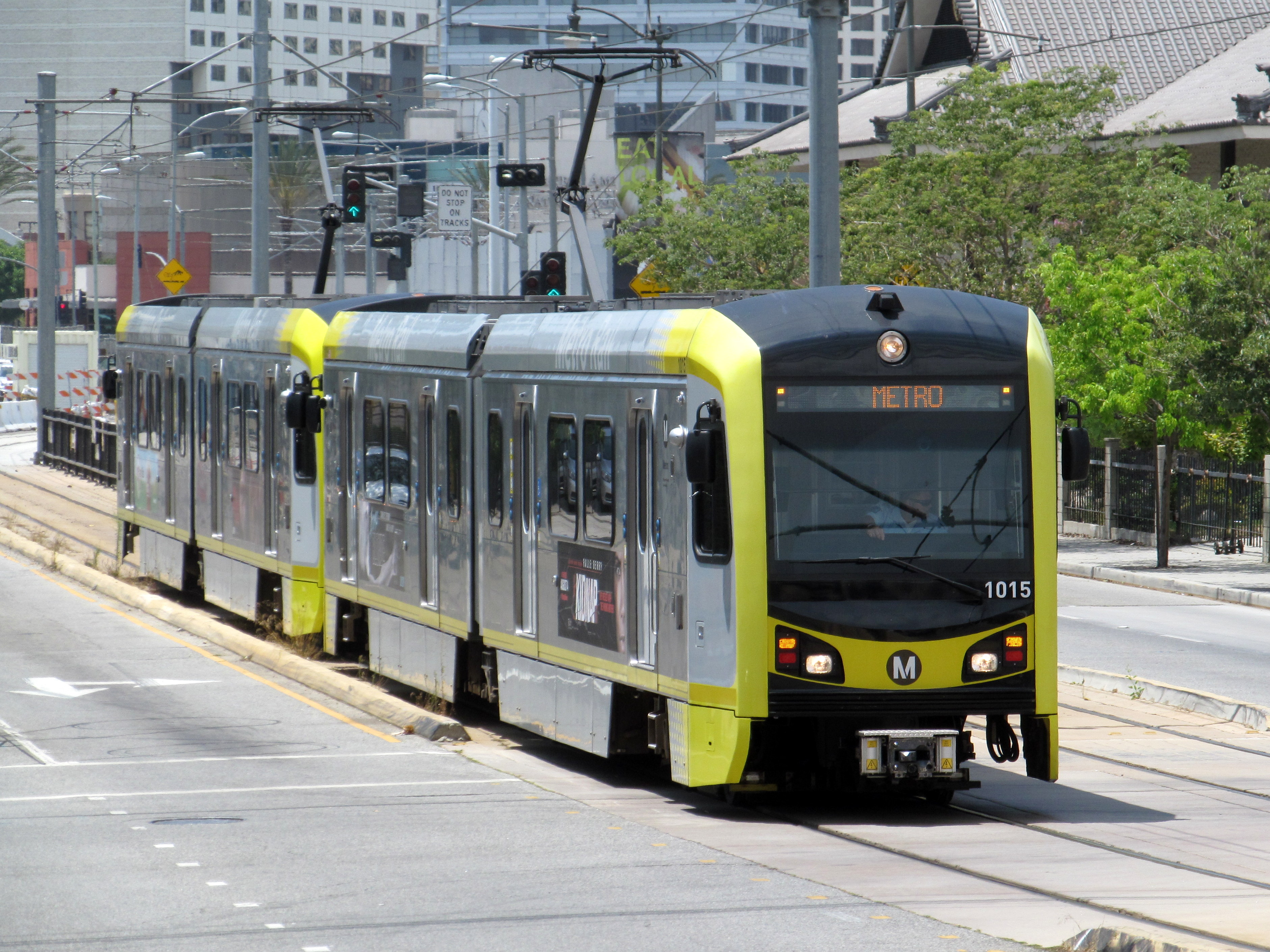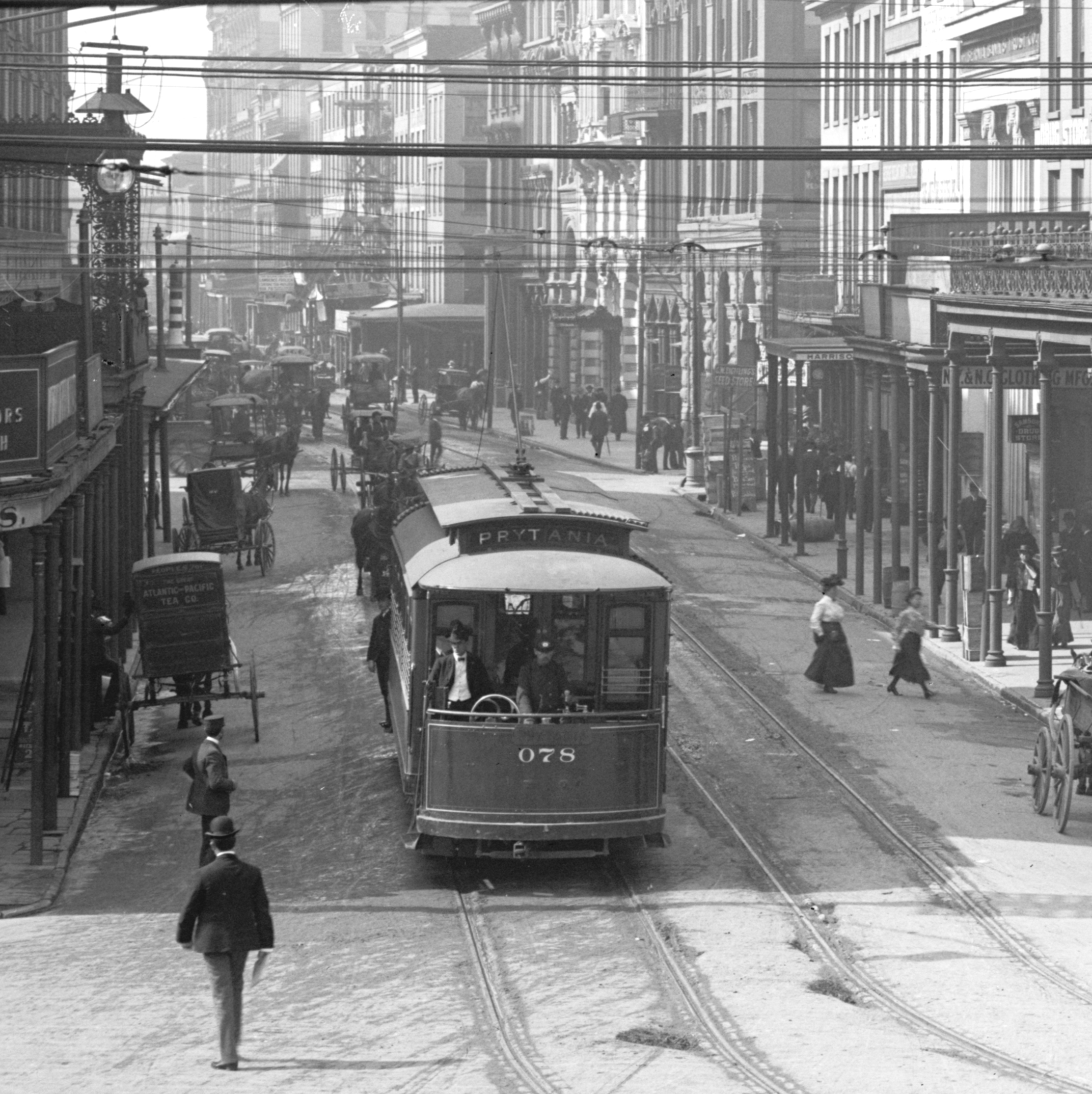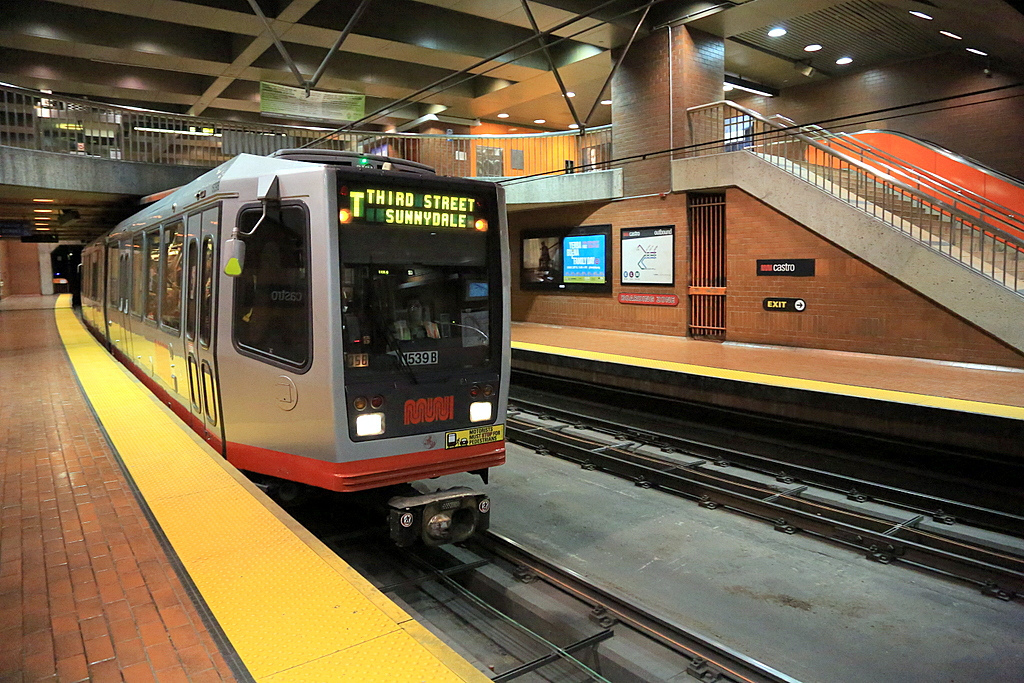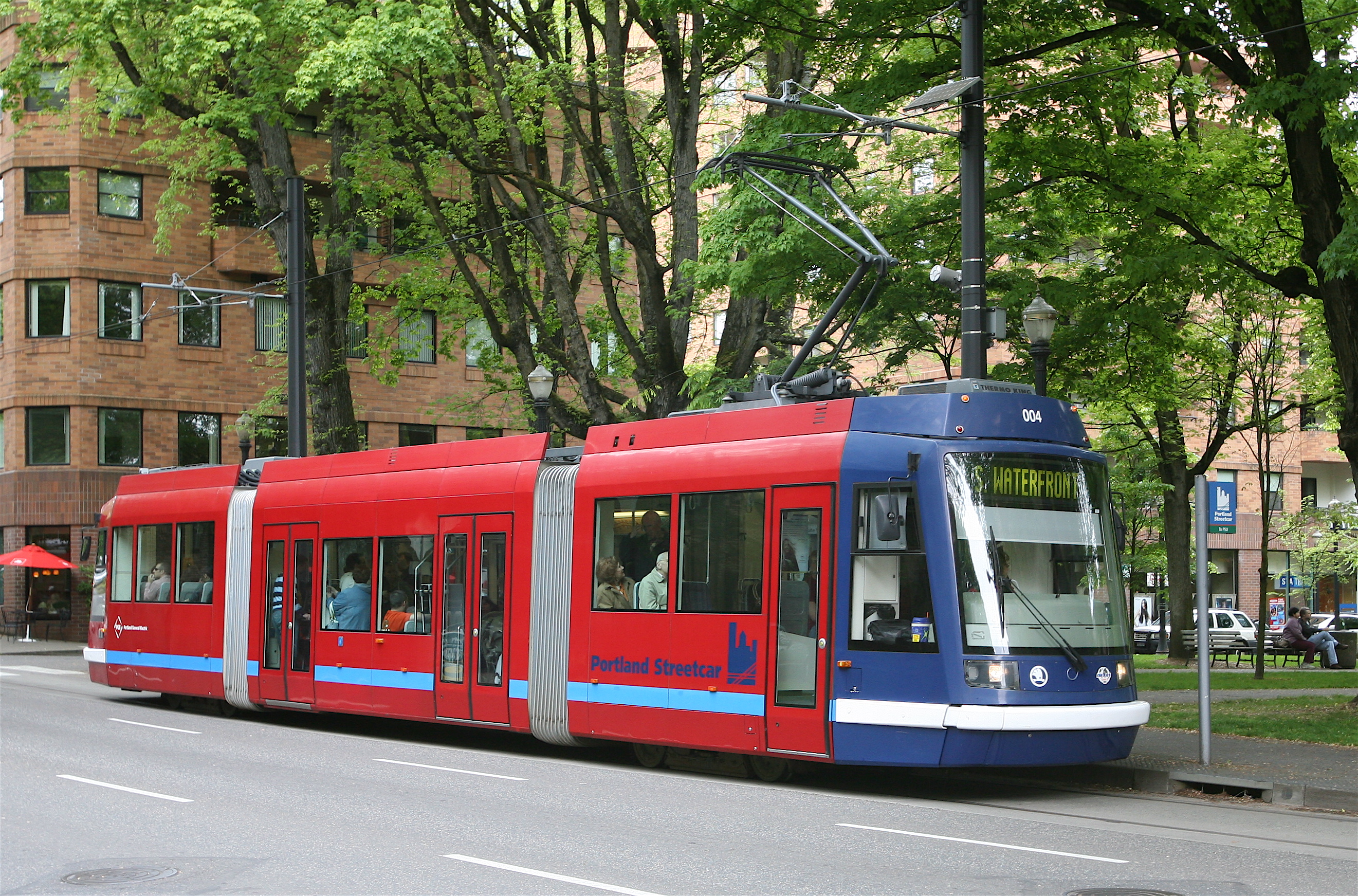Light rail in the United States on:
[Wikipedia]
[Google]
[Amazon]
 Light rail in the United States is a mode of rail-based transport, usually urban in nature. When compared to heavy rail systems like
Light rail in the United States is a mode of rail-based transport, usually urban in nature. When compared to heavy rail systems like
 From the mid-19th century onwards, horse-drawn trams (or horsecars) were used in cities around the world. The St. Charles Avenue Line of New Orleans' streetcar system is the oldest continuously operating
From the mid-19th century onwards, horse-drawn trams (or horsecars) were used in cities around the world. The St. Charles Avenue Line of New Orleans' streetcar system is the oldest continuously operating
 The first-generation legacy systems are typically vestigial elements of sprawling streetcar systems that were decommissioned from the 1950s onward through approximately 1970 as the popularity of the automobile increased. These systems were spared that fate due to these systems having high ridership and some form of exclusive right of way. Many of these streetcar systems have been at least partly upgraded to more closely resemble the more modern second-generation light rail systems.
The first-generation legacy systems are typically vestigial elements of sprawling streetcar systems that were decommissioned from the 1950s onward through approximately 1970 as the popularity of the automobile increased. These systems were spared that fate due to these systems having high ridership and some form of exclusive right of way. Many of these streetcar systems have been at least partly upgraded to more closely resemble the more modern second-generation light rail systems.
 The second-generation of modern light rail systems began in 1981 with the
The second-generation of modern light rail systems began in 1981 with the
 The modern streetcar era started in 2001 with the Portland Streetcar, which inspired several other systems that generally feature smaller single-car trains that travel on short routes, with frequent stops, in lanes that are shared with automobile traffic (street running). There are also some
The modern streetcar era started in 2001 with the Portland Streetcar, which inspired several other systems that generally feature smaller single-car trains that travel on short routes, with frequent stops, in lanes that are shared with automobile traffic (street running). There are also some
 Hybrid rail systems, light rail with some features similar to commuter rail, were introduced in 2004 with New Jersey's River Line. Hybrid rail systems operate small multiple unit railcars like a light rail system, but like commuter rail, they are typically powered by diesel engines over tracks which may be shared with freight trains (which typically only operate overnight, when passenger service has stopped). Unlike most commuter rail systems which only operate during the weekday peak travel periods, hybrid rail systems operate all-day, every day, but typically at longer headways than light rail.
Hybrid rail systems, light rail with some features similar to commuter rail, were introduced in 2004 with New Jersey's River Line. Hybrid rail systems operate small multiple unit railcars like a light rail system, but like commuter rail, they are typically powered by diesel engines over tracks which may be shared with freight trains (which typically only operate overnight, when passenger service has stopped). Unlike most commuter rail systems which only operate during the weekday peak travel periods, hybrid rail systems operate all-day, every day, but typically at longer headways than light rail.
American Public Transit Association
(APTA) ** Table o
Light Rail Transit Agencies in the United States
(from APTA)
Federal Transit Administration (U.S.)
Transportation Research Board (TRB) of the U.S. National Research Council
Light Rail Central photos & news
A movie
of Armour's electric trolley, circa 1897 from
commuter rail
Commuter rail, or suburban rail, is a passenger rail transport service that primarily operates within a metropolitan area, connecting commuters to a central city from adjacent suburbs or commuter towns. Generally commuter rail systems are con ...
or rapid transit
Rapid transit or mass rapid transit (MRT), also known as heavy rail or metro, is a type of high-capacity public transport generally found in urban areas. A rapid transit system that primarily or traditionally runs below the surface may be ...
(subway), light rail systems are typically designed to carry fewer passengers and are capable of operating in mixed traffic (street running
A street running train is a train which runs on a track built on public streets. The rails are embedded in the roadway, and the train shares the street with other users, such as pedestrians, cars and cyclists, thus often being referred to as ru ...
) or on routes that are not entirely grade-separated. Systems typically take one of four forms: the "first-generation" legacy systems, the "second-generation" modern light rail systems, streetcars, and hybrid rail systems (light rail with some commuter rail features). All of the systems use similar technologies, and some systems blur the lines between the different forms.
The United States, with its 27 systems (as counted by the Light Rail Transit Association
The Light Rail Transit Association (LRTA), formerly the Light Railway Transport League (LRTL), is a non-profit organisation whose purpose is to advocate and encourage research into the retention and development of light rail and tramway/street ...
), has a much larger number of "true" light rail systems (not including streetcar systems), by far, compared to any other country in the world (the next largest are Germany with 10 and Japan with 9).
According to the American Public Transportation Association
The American Public Transportation Association (APTA) is a nonprofit group of approximately 1,500 public and private sector member organizations that promotes and advocates for the interests of the public transportation industry in the United S ...
, of the roughly 30 cities with light rail systems in the United States, the light rail systems in six of them (Boston
Boston (), officially the City of Boston, is the state capital and most populous city of the Commonwealth of Massachusetts, as well as the cultural and financial center of the New England region of the United States. It is the 24th- mo ...
, Los Angeles
Los Angeles ( ; es, Los Ángeles, link=no , ), often referred to by its initials L.A., is the largest city in the state of California and the second most populous city in the United States after New York City, as well as one of the world ...
, Philadelphia
Philadelphia, often called Philly, is the largest city in the Commonwealth of Pennsylvania, the sixth-largest city in the U.S., the second-largest city in both the Northeast megalopolis and Mid-Atlantic regions after New York City. Since ...
, Portland (Oregon), San Diego
San Diego ( , ; ) is a city on the Pacific Ocean coast of Southern California located immediately adjacent to the Mexico–United States border. With a 2020 population of 1,386,932, it is the eighth most populous city in the United States ...
, and San Francisco
San Francisco (; Spanish for " Saint Francis"), officially the City and County of San Francisco, is the commercial, financial, and cultural center of Northern California. The city proper is the fourth most populous in California and 17t ...
) achieve more than 30 million unlinked passenger transits per year.
History
 From the mid-19th century onwards, horse-drawn trams (or horsecars) were used in cities around the world. The St. Charles Avenue Line of New Orleans' streetcar system is the oldest continuously operating
From the mid-19th century onwards, horse-drawn trams (or horsecars) were used in cities around the world. The St. Charles Avenue Line of New Orleans' streetcar system is the oldest continuously operating street railway
A tram (called a streetcar or trolley in North America) is a rail vehicle that travels on tramway tracks on public urban streets; some include segments on segregated right-of-way. The tramlines or networks operated as public transport ar ...
system in the world, beginning operation as a horse-drawn system in 1835.
From the late 1880s onwards, electrically powered street railways became technically feasible following the invention of a trolley pole system of collecting current by American inventor Frank J. Sprague who installed the first successful electrified trolley system in Richmond, Virginia in 1888. They became popular because roads were then poorly surfaced, and before the invention of the internal combustion engine and the advent of motor-buses, they were the only practical means of public transport around cities.
The streetcar systems constructed in the 19th and early 20th centuries typically only ran in single-car setups. Some rail lines experimented with multiple unit configurations, where streetcars were joined together to make short trains, but this did not become common until later. When lines were built over longer distances (typically with a single track) before good roads were common, they were generally called interurban
The Interurban (or radial railway in Europe and Canada) is a type of electric railway, with streetcar-like electric self-propelled rail cars which run within and between cities or towns. They were very prevalent in North America between 1900 ...
streetcars or radial railways in North America.
Historically, the rail gauge has had considerable variations, with a variety of gauges common in many early systems (e.g. the broad Pennsylvania trolley gauge
Originally, various track gauges were used in the United States. Some railways, primarily in the northeast, used standard gauge of ; others used gauges ranging from to . As a general rule, southern railroads were built to one or another broad ga ...
, etc. used by New Orleans' streetcars and by the light rail systems in Philadelphia and Pittsburgh). However, most modern second-generation light rail systems now operate on standard gauge
A standard-gauge railway is a railway with a track gauge of . The standard gauge is also called Stephenson gauge (after George Stephenson), International gauge, UIC gauge, uniform gauge, normal gauge and European gauge in Europe, and SGR in E ...
rail.
After World War II, six major cities in the United States (Boston, Newark, New Orleans, Philadelphia, Pittsburgh, San Francisco) continued to operate large first-generation streetcar systems, although most of them were later converted to modern light rail standards. Toronto in Canada marks the other city in North America with a continuing first-generation streetcar system. Additionally, a seventh American city, Cleveland, maintained an interurban system (e.g. the Blue and Green Lines) equivalent to what is now "light rail", that opened before World War I, and which is still in operation to this day.
When several of these cities upgraded to new technology (e.g. San Francisco, Newark, and Pittsburgh), they called it "light rail" to differentiate it from their existing streetcar systems since some continued to operate portions of both the old and new systems.
In the United States, most of the original first-generation streetcar systems were decommissioned from the 1950s onward through approximately 1970 as the popularity of the automobile increased.
Although a few traditional streetcar or trolley systems still exist to this day the term "light rail" has come to mean a different type of rail system. Modern light rail technology has primarily German origins, since an attempt by Boeing Vertol to introduce a new American light rail vehicle was a technical failure. After World War II, the Germans retained their streetcar (Straßenbahn) networks and evolved them into model light rail systems (Stadtbahn
' (; German for "city railway"; plural ') is a German word referring to various types of urban rail transport. One type of transport originated in the 19th century, firstly in Berlin and followed by Vienna, where rail routes were created that co ...
).
The renaissance of light rail in the United States began in 1981, when the first truly second-generation light rail system was inaugurated in the United States, the San Diego Trolley
The San Diego Trolley is a light rail system operating in the metropolitan area of San Diego. It is known colloquially as "The Trolley". The Trolley's operator, San Diego Trolley, Inc. (SDTI), is a subsidiary of the San Diego Metropolitan Tra ...
in California, which adopted use of the German Siemens-Duewag U2 light rail vehicle. (This was just three years after the first North American second-generation light rail system opened in the Canadian city of Edmonton
Edmonton ( ) is the capital city of the Canadian province of Alberta. Edmonton is situated on the North Saskatchewan River and is the centre of the Edmonton Metropolitan Region, which is surrounded by Alberta's central region. The city an ...
, Alberta
Alberta ( ) is one of the thirteen provinces and territories of Canada. It is part of Western Canada and is one of the three prairie provinces. Alberta is bordered by British Columbia to the west, Saskatchewan to the east, the Northwest T ...
in 1978, and which used the same German Siemens-Duewag U2 vehicles as San Diego). Other North American cities, particularly on the West Coast, began planning their own light rail systems in the 1980s.
, there are a total of 53 operational light rail-type lines and systems (noting that some cities, such as Philadelphia, Portland, San Francisco and Seattle, have more than one light rail system) that offer regular year-round transit service in the United States: 26 modern light rail systems, 14 modern streetcar systems, and 13 heritage streetcar systems (including the San Francisco cable car system
The San Francisco cable car system is the world's last manually operated cable car system and an icon of the city of San Francisco. The system forms part of the intermodal urban transport network operated by the San Francisco Municipal Railwa ...
).
"First-generation" legacy systems
 The first-generation legacy systems are typically vestigial elements of sprawling streetcar systems that were decommissioned from the 1950s onward through approximately 1970 as the popularity of the automobile increased. These systems were spared that fate due to these systems having high ridership and some form of exclusive right of way. Many of these streetcar systems have been at least partly upgraded to more closely resemble the more modern second-generation light rail systems.
The first-generation legacy systems are typically vestigial elements of sprawling streetcar systems that were decommissioned from the 1950s onward through approximately 1970 as the popularity of the automobile increased. These systems were spared that fate due to these systems having high ridership and some form of exclusive right of way. Many of these streetcar systems have been at least partly upgraded to more closely resemble the more modern second-generation light rail systems.
"Second-generation" modern systems
 The second-generation of modern light rail systems began in 1981 with the
The second-generation of modern light rail systems began in 1981 with the San Diego Trolley
The San Diego Trolley is a light rail system operating in the metropolitan area of San Diego. It is known colloquially as "The Trolley". The Trolley's operator, San Diego Trolley, Inc. (SDTI), is a subsidiary of the San Diego Metropolitan Tra ...
, which ushered in several systems that generally feature large multi-car trains that travel larger distances, and make fewer stops, on exclusive rights-of-way. These systems were inspired by the German Stadtbahn
' (; German for "city railway"; plural ') is a German word referring to various types of urban rail transport. One type of transport originated in the 19th century, firstly in Berlin and followed by Vienna, where rail routes were created that co ...
(English: city rail) systems.
Streetcar systems
 The modern streetcar era started in 2001 with the Portland Streetcar, which inspired several other systems that generally feature smaller single-car trains that travel on short routes, with frequent stops, in lanes that are shared with automobile traffic (street running). There are also some
The modern streetcar era started in 2001 with the Portland Streetcar, which inspired several other systems that generally feature smaller single-car trains that travel on short routes, with frequent stops, in lanes that are shared with automobile traffic (street running). There are also some heritage streetcar
Conservation and restoration of rail vehicles aims to preserve historic rail vehicles.
Trains
It may concern trains that have been removed from service and later restored to their past condition, or have never been removed from service, like UP ...
lines, which operate in the same manner using vintage vehicles or historic vehicle replicas, which have been built before and after the modern streetcar movement.
"Hybrid rail" systems
 Hybrid rail systems, light rail with some features similar to commuter rail, were introduced in 2004 with New Jersey's River Line. Hybrid rail systems operate small multiple unit railcars like a light rail system, but like commuter rail, they are typically powered by diesel engines over tracks which may be shared with freight trains (which typically only operate overnight, when passenger service has stopped). Unlike most commuter rail systems which only operate during the weekday peak travel periods, hybrid rail systems operate all-day, every day, but typically at longer headways than light rail.
Hybrid rail systems, light rail with some features similar to commuter rail, were introduced in 2004 with New Jersey's River Line. Hybrid rail systems operate small multiple unit railcars like a light rail system, but like commuter rail, they are typically powered by diesel engines over tracks which may be shared with freight trains (which typically only operate overnight, when passenger service has stopped). Unlike most commuter rail systems which only operate during the weekday peak travel periods, hybrid rail systems operate all-day, every day, but typically at longer headways than light rail.
Systems under construction
The following table lists entirely new light rail, streetcar, or hybrid rail systems under construction. Systems that are in the planning stages but not yet under construction (e.g.Glassboro–Camden Line
The Glassboro–Camden Line (GCL) is a planned diesel multiple unit (DMU) light rail system to be located in South Jersey.
At the northern terminus, the Walter Rand Transportation Center in Camden, it will connect with the River Line with w ...
, MARTA
Marta may refer to:
People
* Marta (given name), a feminine given name
* Märta, a feminine given name
* Marta (surname)
: István Márta composer
* Marta (footballer) (born 1986), Brazilian professional footballer
Places
* Marta (river ...
Clifton Corridor
The Clifton Corridor is a proposed public transportation corridor in and near Atlanta, Georgia, roughly connecting the Buckhead, Emory University, and Decatur areas.
Proposed route
The proposed route stretches from:
* Lindbergh Center at the ...
, Austin Capital MetroRail
Capital MetroRail is a hybrid rail (light rail with some features similar to commuter rail) line that serves the Greater Austin area in Texas, and which is owned by Capital Metro. The Red Line, Capital Metro's first and only rail line, connects ...
Blue
Blue is one of the three primary colours in the RYB colour model (traditional colour theory), as well as in the RGB (additive) colour model. It lies between violet and cyan on the spectrum of visible light. The eye perceives blue when ...
and Orange Lines, and Omaha Streetcar
The Omaha Streetcar is a proposed streetcar in Omaha, Nebraska.
History
Background
The Omaha-Council Bluffs streetcar era began operations in 1868. By 1890, the metropolitan area had of tracks — more than any city except Boston. The Omah ...
), are not listed; expansions of existing systems are also not listed here.
See also
*List of United States light rail systems by ridership
The following is a list of all light rail systems in the United States, ranked by ridership. Also included are those urban streetcar/trolley systems that are providing regular public transit service (i.e. operating year-round and at least five ...
* List of rail transit systems in the United States
* Light rail in North America
Light rail is a commonly used mode of public transit in North America. The term '' light rail'' was coined in 1972 by the Urban Mass Transportation Administration (UMTA; the precursor to the U.S. Federal Transit Administration) to describe new str ...
* Streetcars in North America
* Public Transportation in San Diego
* Light rail in New Jersey
Light rail in New Jersey is provided by NJ Transit, a state-owned corporation which also provides bus and commuter rail services. In , the light rail system had a ridership of . Light rail, among other forms of transit, is a major part of the sta ...
* Transportation in Dallas, Texas
* Transportation in Houston
This is a documentation of the routes, highways, parking requirements, or anything related to transportation in Houston.
Roads and highways
Houston has a hub-and-spoke freeway structure with multiple loops. The innermost is Interstate 610, ...
* Transportation in Portland, Oregon
* Transportation in San Francisco
People in the San Francisco Bay Area rely on a complex multimodal transportation infrastructure consisting of roads, Transportation in the San Francisco Bay Area#Bridges, bridges, highways, rail, tunnels, airports, Transportation in the San Fran ...
* Transportation in Salt Lake City
* Transportation of St. Louis, Missouri
* Rail transit in metropolitan Denver
* Rail transit in Boston
* Transportation in San Jose, California
Transport (in British English), or transportation (in American English), is the intentional movement of humans, animals, and goods from one location to another. Modes of transport include air, land (rail and road), water, cable, pipeline, a ...
* Transportation in Hudson Country, New Jersey
* Rail transit in Kenosha, Wisconsin
* Transportation in New York City
The transportation system of New York City is a network of complex infrastructural systems. New York City, being the most populous city in the United States, has a transportation system which includes one of the largest subway systems in the w ...
Notes
References
External links
American Public Transit Association
(APTA) ** Table o
Light Rail Transit Agencies in the United States
(from APTA)
Federal Transit Administration (U.S.)
Transportation Research Board (TRB) of the U.S. National Research Council
Light Rail Central photos & news
A movie
of Armour's electric trolley, circa 1897 from
Library of Congress
The Library of Congress (LOC) is the research library that officially serves the United States Congress and is the ''de facto'' national library of the United States. It is the oldest federal cultural institution in the country. The libra ...
{{North America topic, Light rail in